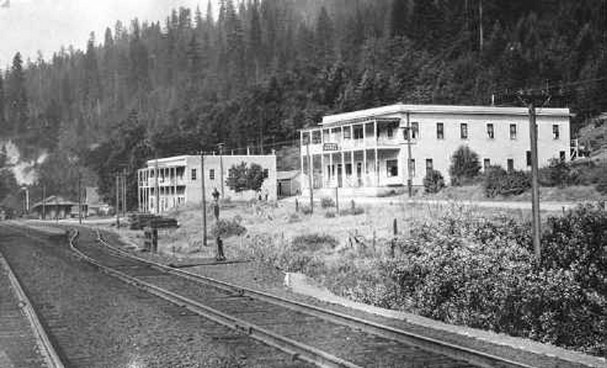The History
During Prohibition and the 1920s, Castella was THE place to go in the upper Sacramento River Canyon. People flocked there because it was a beautiful out-of-the-way place where alcohol flowed like water.
Prohibition began on Jan. 16, 1920, when the Volstead Enforcement Act became law. It outlawed the sale of alcoholic beverages, and the manufacture and transportation of alcohol.
Illegal stills began popping up throughout Shasta County, especially in the Sacramento River Canyon area, with Castella becoming the center for the illegal stills. For the next 10 years, almost every creek, spring and water ditch became home to a still.
Shasta County was possessed of “bootleggers everywhere,” making the so-called “Noble Experiment” not so noble. Popular names of their illegal alcohol products were Jackass Brandy, Bathtub Gin and Rotgut.
Frequent raids were conducted on the saloons to try to stop the flow of alcohol but it didn’t deter them. Some of the saloon owners were arrested, but they quickly returned to business as usual. None of the saloons went out of business.
The trains stopped at the Castle Rock Railway Station full of people who came from as far away as the Bay Area to have a rip-roaring time. When the partygoers disembarked the train, they usually headed straight for Mike Padula’s Saloon across the street from the train station.
Mike’s Saloon was built in the early 1920s. Mike was only 5 feet tall but managed to rule his saloon with an iron hand.
According to a booklet titled “A Holiday Home Tour — December 11, 2004” published by the Castella Community Education Organization, “Mike’s place had a large wooden bar running the length of the room with 40 bar stools, a dance floor and stage for the band. Hundreds of pictures of beautiful women covered the ceiling, and mirrors covered the wall with the exception of a small opening covered with glass. A bottle of whiskey was housed in this opening, reportedly worth $25,000.
Mike Padula enjoyed his Rolls Royce, always parking it next to his bar. One of his favorite pastimes was to dress in his smoking jacket, sit in the backseat of his Rolls Royce (a cold drink in hand), and let the young girls of Castella drive him around town.
“Many movie stars and friends from Hollywood and the Bay Area would visit Mike. Frequently San Francisco newspaper mogul William Randolph Hearst would visit. Stories say he would book Mike’s place for the night and hire a local band known as the ‘Hottentots.’ At the end of the evening, Hearst would tip $20 bills under every ashtray in the saloon.
“Mike had his share of run-ins with the law, particularly during the Prohibition years, being arrested numerous times for selling Jackass Brandy.”
Brian Theriot grew up in the Castella area. Even though he no longer lives in Castella, he is the proud owner of the Castle Stone Cottage Inn. His stone cabins were once part of the Engle Inn Resort, another popular resort.
According to Theriot, the Crag View Resort was the biggest hot spot in the area where the Democrats and the loggers would party to the likes of the Jimmy Dorsey Band right along with the partygoers who traveled there on the train.
Even after Prohibition ended in 1933, the trains still stopped at Castella, but this time they were troop trains. Theriot said, “The United States Army troop trains during World War II would stop at the Castella Depot and the soldiers would seem to find their way to Mike’s Bar. Mike being an enterprising person would have many Ladies of the Night available for their entertainment. The Shasta View Hotel would always recommend the Crag View Resort across the bridge if their rooms were full, which in most cases happened almost every time the train stopped.”
The Present
According to Theriot, the Crag View Resort became a huge trailer park in the 1950s. Even though the bridge to it across the Sacramento River has been repaired, no access is allowed into the old resort area.
The old Castella post office is now someone’s home and sits across the railroad tracks from where Mike’s Saloon was once located. The stone steps to his saloon are still there to mark the spot.
Over at what was the Crag View Resort is a tree that has grown pretty tall over the years. It has a chair in it that somehow got caught in the tree during the Prohibition years and was never pulled out. Now it’s so high, it’s hard to see.
Gone are the days of all-night parties and all night drinking. Also gone are all the businesses in the old town site. Today it is a quiet and sleepy little community.
Dottie Smith is the author of The Dictionary of Early Shasta County History, the book from which this information was extracted. She is the former curator of the Shasta College Museum and instructor of Shasta County History at Shasta College. Check out her daily history blog at www.redding.com and her website at www.shastacountyhistory.com. Contact her at historydottie@yahoo.com.

